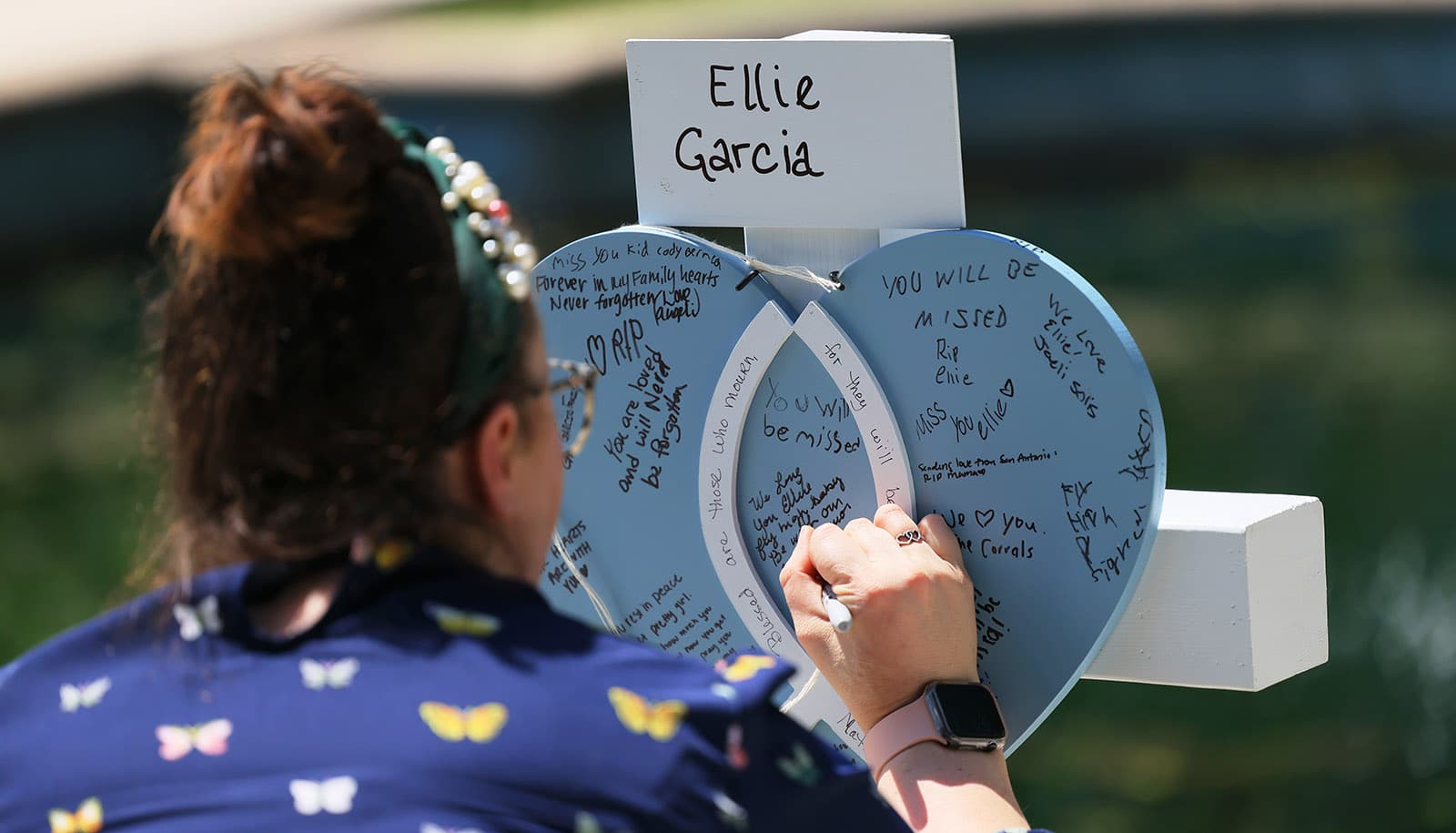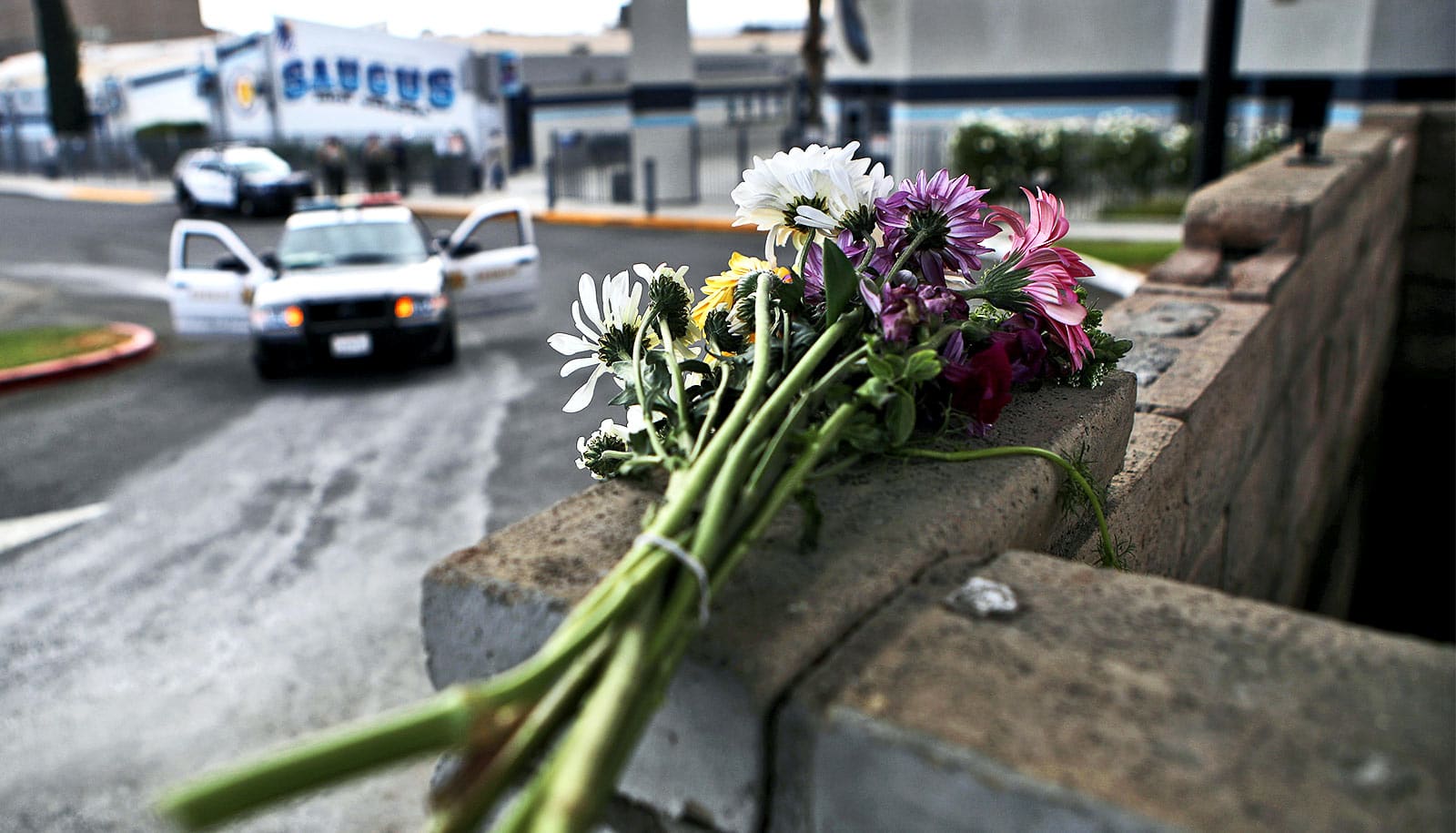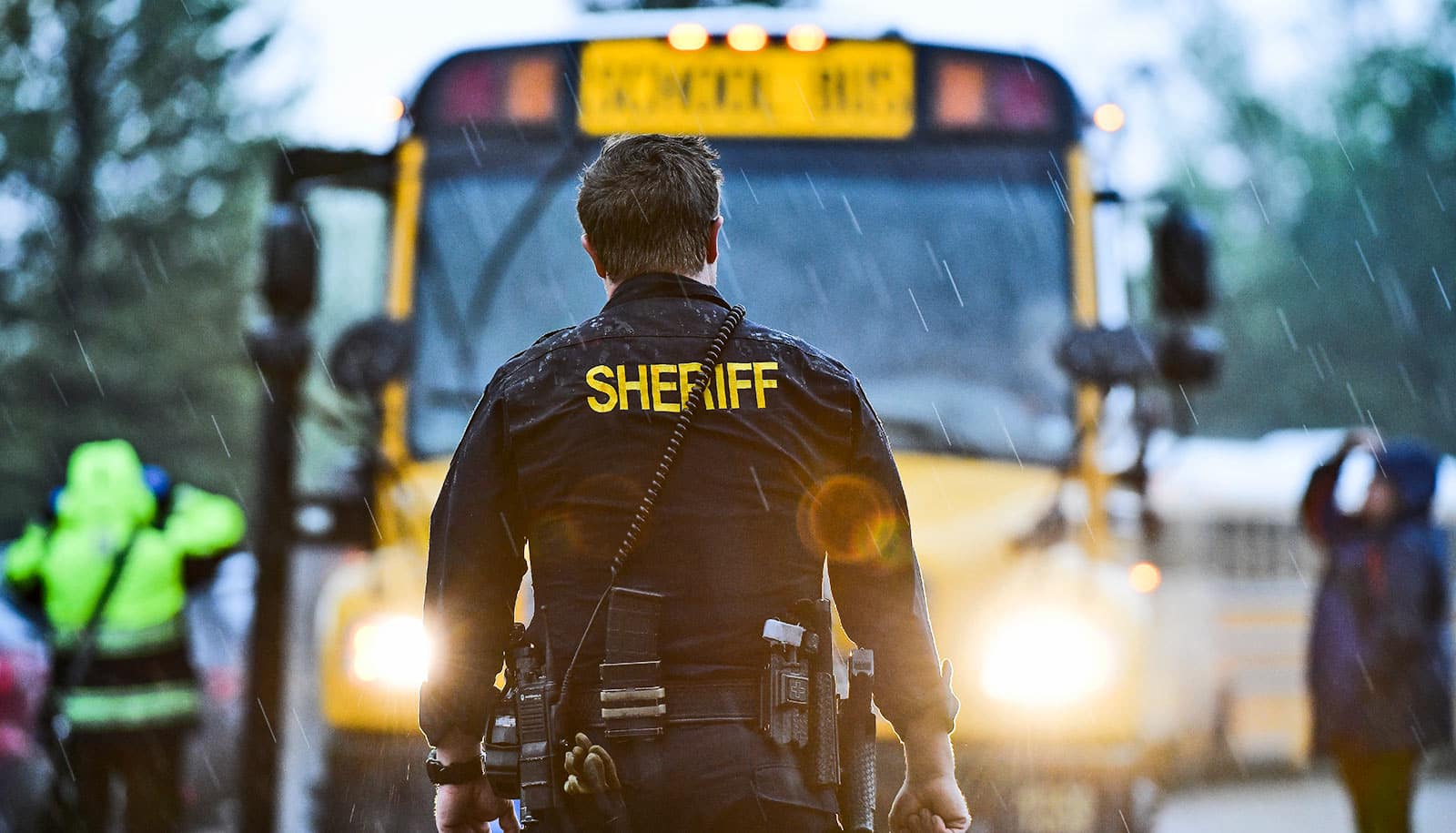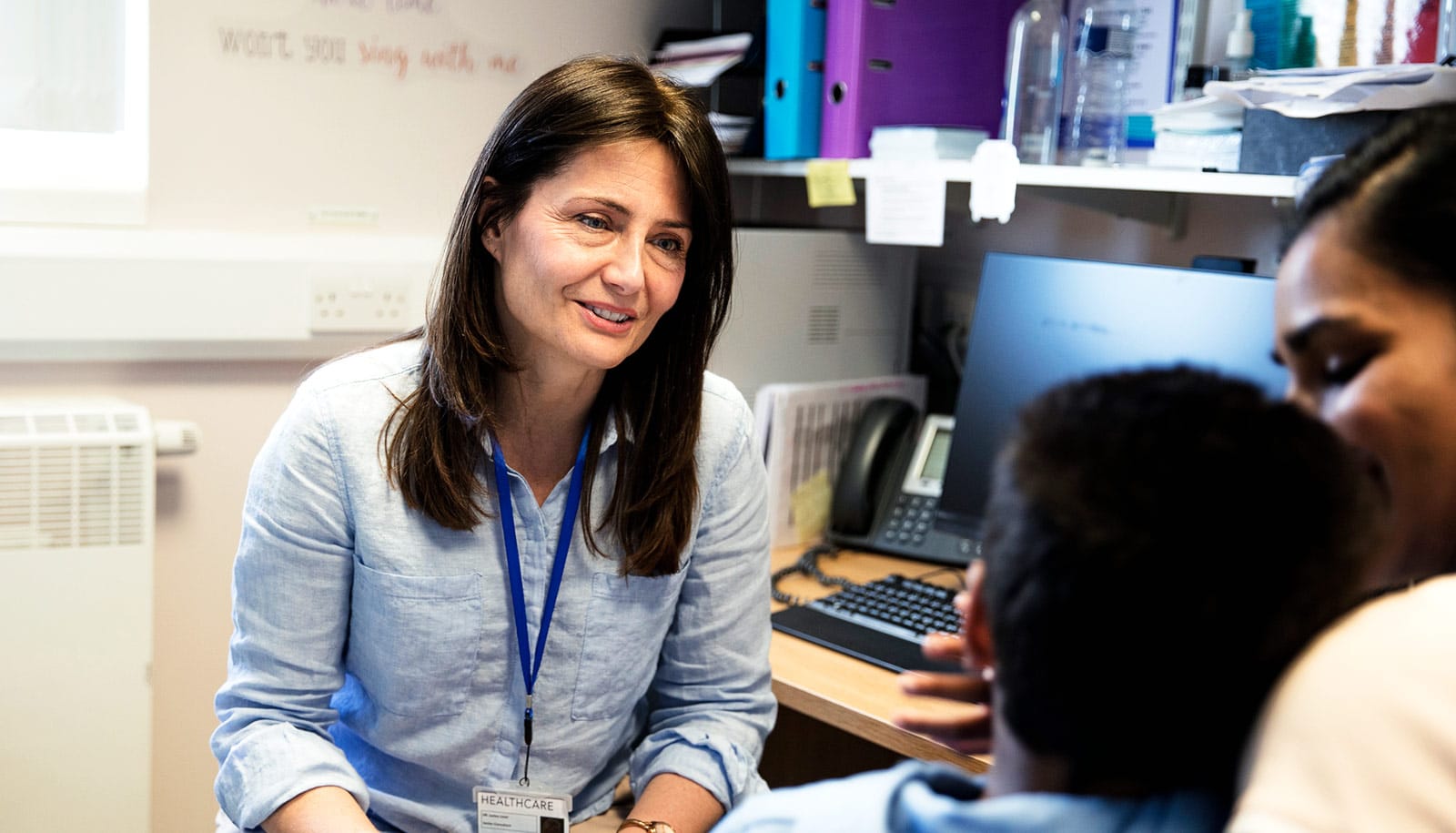In the wake of the mass shooting at an elementary school in Texas, teachers and parents are once again wondering how to talk about the horrific events to their children without stoking fear.
Nearly 300,000 students in the United States have been on a school campus during a shooting since 1999. In the past decade, there have been almost 1,000 school shootings in America, according to Sandy Hook Promise, a nonprofit group founded by families who lost loved ones in the 2012 Sandy Hook Elementary School shooting in Newtown, Connecticut.
Child clinical psychologist Jennifer Greif Green, associate professor of special education at Boston University’s Wheelock College of Education & Human Development, is an expert on student mental health and helping schools navigate moments of anguish and suffering.
She has studied post-traumatic stress disorder in children following the 2013 Boston Marathon bombings, the impact of school violence on adolescent well-being, and children’s stress and behavior after a community trauma.
In her latest project, she’s helped develop free trainings for schools and districts navigating the aftermath of a harrowing event.
Here, Green talks about what supports will be needed to help teachers and children return to their classrooms in Uvalde and how her research can guide the rest of us as we deal with this tragic event:
What should parents be saying to their kids after the shooting in Texas and what questions can they expect over the next few weeks?
A lot of us as parents were wondering if and how to talk to our children about it. I brought it up with one of my children. As I was dropping her off at school, she turned back around to me and said, “Mommy, I’m just really scared to be here. Are you sure I’m safe?”
It’s just heartbreaking. Some general guidelines are to initiate conversations about this event, because often our children will hear about it at school or will catch word of it on the news. As parents, if we can open up conversations with them, then it communicates to them that we’re willing to have these difficult conversations, and that we’re available to answer questions they have, and to support them as they are processing what they’re hearing.
Asking them what they’ve heard already is a good place to start if they’ve already heard about what happened, so that we as parents are not sharing new information necessarily, but are hearing where they’re coming from, what they already understand, and correcting any misperceptions that they have.
And focusing on what we’re doing to keep children safe: it’s important to communicate to our children that we believe they’re safe at school. It’s also important to limit news coverage that children see; the news is really difficult for me to watch as an adult.
How do you talk to those kids who are scared to go to school, who are worried about what could happen?
The first thing is to validate how they’re feeling, that this is a really scary event to hear about—it makes sense that they feel scared to go to school—and to thank them for sharing those feelings and those worries.
We want to be in a position where children feel comfortable sharing those worries and concerns with us. And then as adults, we can talk about how we believe that the schools we’re sending them to are doing everything they can to keep children safe and are safe places to be. We can express that we trust that they will be safe when we drop them off at school, which can be a hard thing to do.
How do the teachers and educators in Uvalde even begin dealing with a trauma like this—how can they prepare themselves and their children to return to the classroom?
It sounds like the district’s closing for the rest of the year, so they’re thinking about how to return to the classroom in the fall and how to re-create a sense of safety for students and to rebuild their community.
I’ve been doing work on a grant funded by SAMHSA, the Substance Abuse and Mental Health Services Administration, on a project called Network for Enhancing Wellness in Disaster-Affected Youth, or NEW DAY. The principal investigator is Jonathan Comer at Florida International University—which is disseminating evidence-based trainings for clinicians and school staff who work with children and adolescents following disasters and traumas such as this one.
What are some of the tools you’re giving to schools and educators to help them in these moments of trauma?
There are three trainings. The first is called Psychological First Aid and is meant to be used in the immediate aftermath of a disaster. The goals are to help reduce initial distress and to stabilize children and families, and to connect them with resources.
The second is called Skills for Psychological Recovery, and that is meant to be used in the weeks and months following a disaster—so typically three months or more after a disaster—to help with ongoing distress that many children and their families experience, and to help to re-form a sense of safety and connection to community.
To find out more about the no-cost trainings, contact Green at jggreen@bu.edu.
The third is called Child-Adult Relationship Enhancement. And that training is for any children—but is particularly useful and helpful for young children—to help strengthen attachment and relationships between children and parents and other caregivers to reduce behavioral concerns and distress following disasters.
We’re disseminating these trainings as broadly as possible and at no cost to any communities, schools, or districts that want them. We’ve been doing the trainings and workshops both in person and virtually. If people are interested in any of those trainings for their community—whether it be at a clinic or a school district—that’s a resource that we would love to share.
It seems like the first training is probably the one that’s most relevant to the moment that we’re in right now. What does that involve?
The steps are focused on immediate support and stabilizing people right after a disaster, so asking them what they need. Often that involves connecting them with immediate resources—it’s not typically about processing deeper feelings, past trauma, or other experiences they’ve had, but it’s about how to manage in that moment and to be connected to resources and to people in their community that can be immediately helpful to them.
Some of the aims are to provide safety and comfort for children and families, to gather information on their current needs, and to use that information to offer practical assistance.
There have been 27 school shootings in the United States already this year. Do you now have to routinely prepare your students, future educators, for the prospect of dealing with an atrocity in their schools?
Unfortunately, we’ve been talking to our teacher preparation students about it for a long time, because this is not new and teachers are concerned about the safety of their students.
Teachers across the country need to walk back into classrooms this morning and be prepared to have conversations with their students about what happened and to support their students. I speak with students in my classes about school safety and about how to respond to trauma when it occurs, and how to open up these conversations with their students in ways that are developmentally appropriate and supportive of their students.
Are there any resources you can share with educators and caregivers who are reading this and feeling overwhelmed by the things that they have to talk to their students about?
The National Association of School Psychologists has some guidelines for how to talk to children about trauma and about school shootings. The other resource I like to share is the National Child Traumatic Stress Network—they have a number of resources that are translated into multiple languages that give guidance to teachers, parents, and other caregivers about how to talk to children about trauma.
Is there anything else from your research or experience or any other resources you’ve drawn from in the past that you’d like to share?
I just want to highlight the need to pay attention to teachers and school staff who are walking back into a workplace where once again they may not feel safe and supported.
For us as a community, and especially as a community of educators, we need to be thinking about how to support our teachers, and more broadly, our school staff who are walking into schools and are having these difficult conversations with children.



